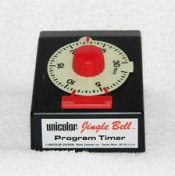Hi all,
First of all, let me say that I am not looking for an enlarger timer. I have a Patterson 2000 digital timer that works wonders. No, instead I am looking for a timer that I can use while doing my tray processing. I recently visited a darkroom that had a Gralab 300 (standard issue in student darkrooms, of course), which made things so simple! Anyway, I currently use a smartphone app for timing my develop/stop/fix processes. The problems are that it can be cumbersome to set, and more importantly, the light is not truly "safe." You can easily see some blue light in the room. And, of course, it drains my phone's battery.
I would try getting a Gralab 300, but it's bulky for my purposes, and expensive. All I'm looking for is a timer that I can (a) see in the dark, (b) set quickly and easily, and (c) not take too much of my very limited space. Things like a buzzer would be neat, but unnecessary. I'm thinking that since I'm not trying to control the flow of electricity with it, there's got to be something cheap out there I can use for simple timing. Does anyone have any recommendations?
First of all, let me say that I am not looking for an enlarger timer. I have a Patterson 2000 digital timer that works wonders. No, instead I am looking for a timer that I can use while doing my tray processing. I recently visited a darkroom that had a Gralab 300 (standard issue in student darkrooms, of course), which made things so simple! Anyway, I currently use a smartphone app for timing my develop/stop/fix processes. The problems are that it can be cumbersome to set, and more importantly, the light is not truly "safe." You can easily see some blue light in the room. And, of course, it drains my phone's battery.
I would try getting a Gralab 300, but it's bulky for my purposes, and expensive. All I'm looking for is a timer that I can (a) see in the dark, (b) set quickly and easily, and (c) not take too much of my very limited space. Things like a buzzer would be neat, but unnecessary. I'm thinking that since I'm not trying to control the flow of electricity with it, there's got to be something cheap out there I can use for simple timing. Does anyone have any recommendations?











